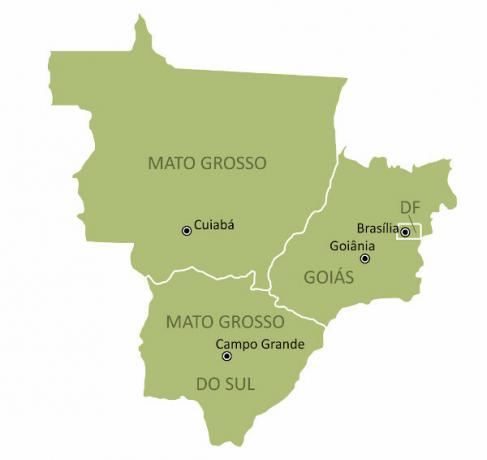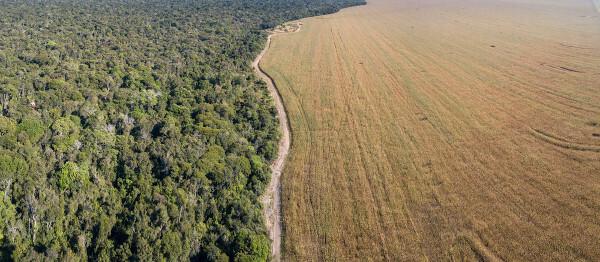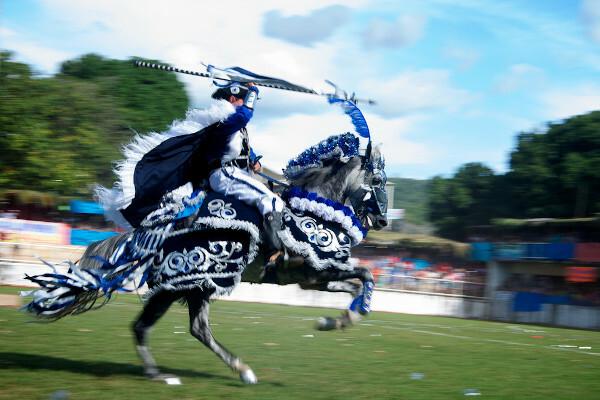The Midwest region it is relatively extensive, occupying approximately 19% of the Brazilian territory. However, its states — Goiás, Mato Grosso, Mato Grosso do Sul and the Federal District — are not very populated, having one of the smallest demographic densities of Brazil.
Another striking feature of the Midwest is its strength in the primary sector of the economy. Agricultural and livestock activities are highlighted in the three largest states in terms of land area, with emphasis on Mato Grosso, which has the largest Brazilian cattle herd.
Read more: Regions of Brazil - groupings of states with similar characteristics
States of the Midwest region
The Midwest presents a geographical disposition that does not allow coastal exit. See, in alphabetical order, the Midwestern states and their capitals.
States |
capitals |
Gentiles |
Federal District |
Brasilia |
brazilian |
Goiás |
Goiania |
Goiano |
Mato Grosso |
Cuiabá |
Mato Grosso |
Mato Grosso do Sul |
Large field |
Mato Grosso do Sul or Mato Grosso do Sul |
General data for the Midwest region
See now some statistical data from this region, according to the Brazilian Institute of Geography and Statistics, the IBGE. These data are from 2019.
Territorial area: approximately 1.6 million km², which represents 19% of the Brazilian territory.
Population: 16,297,074 inhabitants
household income per capita (in reais): 1727,25
Demographic density: 11.98 inhabitants per km²
Human development Index: 0,753
Elementary school enrollment: 2,130,942 students
Gross Domestic Product (in reais): 632.890.000.000,00
Infant mortality rate|1|:14,8

Brief history of the Midwest region
The history of the Midwest region should be told from the settlement of the region. For a long time, O Çenter-Othis brazilian was a spanish area, due to Treaty of Tordesillas. For almost two centuries, only Spanish Jesuits ventured into the interior areas to catechize natives, in the so-called Jesuit missions.
Do not stop now... There's more after the advertising ;)
In the 17th century, paulistas known as Bwalkers left for the current areas of the Midwestern states in search for gold and precious stones. This ore was discovered by the pioneer Bartolomeu Bueno da Silva, known as Anhanguera. This discovery in a region of the state of Goiás led to the foundation of an arraial. However, the gold found was alluvial, a kind of gold that was easily depleted, which meant that the gold activity lasted for a short time.
At the end of the 17th century and beginning of the 18th, cattle farms were founded in the Midwest, which facilitated, slowly and gradually, the fixed settlement of some areas.
In the 19th century, the region was still sparsely populated, as the greatest concentration was on the coast and in the north of Brazil, with the extraction of rubber from rubber trees.
The effective occupation of the region only took place in the 20th century, with the railroad development and industrialization from the interior of the country, from the 1930s to the 1950s and especially in the 1960s, with the Brasilia construction, the Federal Capital.
See more: Capitals of Brazil - cities that house the headquarters of state governments
Midwestern climate
As it has no outlet to the sea, the climate in almost the entire Midwest region is continental tropical. However, some areas may have an equatorial, subtropical and high-altitude tropical climate. Let's look at some characteristics of each climate and its areas of action:
O continental tropical climate has two well-defined seasons, a drought (Winter) and a rainy one (summer). Due to this, the rainiest periods are concentrated during the summer, from November to March, with a dry season during the months of May to September. This climate occurs in almost the entire region, with a few exceptions.
already the equatorial climate predominates in northern Mato Grosso, with intense and well-distributed rains throughout the year because of the Amazon rainforest and the evapotranspiration of trees. Also, the temperatures are quite high due to the proximity to the equator line.
O subtropical climate can be located in the extreme south areas of Mato Grosso do Sul, with the four seasons well defined: severe winters, due to the Atlantic polar mass, hot summers, and regular rainfall throughout the year.
O ttypical of Theattitude, common in areas with high altitudes, with mild temperatures, is present in the south of Mato Grosso do Sul and in some higher reliefs in Mato Grosso, such as Chapada dos Guimarães.
Midwest relief
Regarding the relief, three units are found in the Midwest: plateaus, depressions and plains. The first two units were formed in the Cenozoic Era, being very old reliefs that suffered many erosion processes. The plains, on the other hand, are important to the region's economy, as they are widely used in agricultural and cattle raising practices, such as the Pantanal of Mato Grosso.
Among the plateaus the best known in the Midwest, we can highlight Chapada dos Parecis, in the mid-north of Mato Grosso; Chapada dos Guimarães, also in Mato Grosso; and Chapada dos Veadeiros, in Goiás. All these plateaus have altitudes ranging from 300 m to 1200 m.

already the depressions in the Midwest, they are famous for harboring river beds, such as the dAraguaia epression, which follows the valleys of the Araguaia river, and the Tocantins depression, where the waters of the Tocantins river flow.
One of plains best known in the Center-West region is the river Araguaia, which forms theiBananal's island, on the border between Tocantins and Goiás. A relatively flat area, with altitudes from 0 m to 200 m.
Hydrography of the Midwest region
Due to the region's relief and location, important rivers are born in the Center-West that feed other areas of the country, such as some states in the South and North of Brazil. The Midwest has areas in which three river basins can be found: Tocantins-Araguaia, Paraguay and Amazonia.
THE Tocantins-Araguaia basin and the second largest in Brazil and feeds all states, with the exception of Mato Grosso do Sul. Its main river in the Midwest is the Araguaia, which originates in Goiás and is one of the tributaries of the Tocantins River.
In the state of Mato Grosso do Sul, we have the Paraguay watershed, which also runs through the state of Mato Grosso. The main river, the Paraguay River, originates in Mato Grosso, in the Chapada dos Parecis, and runs along the north-south path, passing through Mato Grosso do Sul, until it reaches Paraguay, towards the Atlantic Ocean.
THE Amazon basin it is present in Mato Grosso, more precisely in the center-north, with large tributaries of the Amazon River, such as the Xingu River. It's a hot and humid area, with great biodiversity, both terrestrial and aquatic. There is a great presence of tourism and fishing, but the logging and agricultural advances harm its preservation.
Also access: Consequences of anthropic actions on the environment
Midwest vegetation
The vegetation of the Midwest is quite diversified, as there is a strong incidence of sunlight and hot weather, ideal factors for the flowering of the biodiversity. Among the biomes found in the region, three deserve attention: the Cerrado, the Pantanal and the Amazon Forest.
These are landscapes with different characteristics, but that suffer from a common factor: agricultural expansion. Because of this, these biomes are heavily threatened, and, in many places, some species of fauna may become extinct.
O thick, typical of the Midwest and present in Tocantins, Minas Gerais and Maranhão, is a specific plant formation of tropical climates, with poor, infertile soils. Its trees are small and medium-sized, with tortuous branches, thick bark trunks and deep roots to fetch water from the underground. Because of this, many scholars call the Cerrado thefforest iinverted, as the roots of some trees are larger than the exposed vegetation.
![Cerrado in Goiás: low and medium-sized trees, but with deep roots.[1]](/f/b81c87b4a37fb13ab367fc52cffb7df6.jpg)
Where the ground is more fertile, the vegetation is denser, with larger and less sparse trees. This area of occurrence of the Cerrado is known as çwrong, with emphasis on the pequizeiro, the tree that supplies pequi. There are also, in the vicinity of streams and rivers, the formation of paths, where buritis are found.
In the west and north of Mato Grosso, we have the presence of Amazon rainforest, with high temperatures and abundant rainfall. With one dense and diverse vegetation (biodiversity), is one of the areas of the Amazon that suffers least from deforestation. In this area we have the Xingu National Park, an important area of forest and native preservation, being a transition region between the Cerrado and the Amazon, in the north of Mato Grosso.
O wetland is present in the west of Mato Grosso do Sul and southwest of Mato Grosso, with a very varied vegetation. This variation occurs due to the degree of humidity and floods that occur in rainy periods.
Demographics of the Midwest region
O late settlement and the development of the Midwest make this region one of the least populated in the country. With just over 16 million inhabitants, the area accounts for approximately 8% of the Brazilian population. It is currently the less populated region of Brazil, with one of the lowest population densities.
However, in the 1990s and early 2000s, the Midwest and North were the regions that presented the highest population growth rates due to the arrival of migrants and, specifically in the Midwest, because agricultural frontier expansion and to the fort Brasilia development.
The population in the Midwest, as well as in Brazil, is mostly urban. Due to the migration and the rural exodus from other states to this region at the end of the last century, many cities in it have serious urban problems: lack of housing, insufficient and overcrowded schools.
Goiania is the only city that fits asmetropolis regional, being a reference in many ways, such as in health, with the headquarters of the Emergency Hospital of Goiás, HUGO. This hospital serves people from all over the state of Goiás and also from some cities in Mato Grosso.
Brasiliahas the highest demographic density in the country (more than 440 inhabitants per km²). This high number is explained by the high migratory flow to the region since the 1950s until today, with people seeking stability in the public sector.
Main economic activities in the Midwest region
In the Midwest region, the economy is highlighted in the primary and secondary sectors, agriculture and livestock and industries, respectively.
THE agriculture in some states it is favored by the existence of terra roxa, a fertile soil originated from basaltic composition, very common in some areas of Mato Grosso. However, most of the region has soils with low fertility, which led to agricultural difficulties until the last century.
In the 1970s, the Brazilian Agricultural Research Corporation (Embrapa) developed several techniques to increase food production, in communion with the green revolution that took place in the world. One of these techniques is the liming, which uses limestone to regulate the acidity of the Cerrado soil, in addition to developing soybean seeds, which have adapted to this biome.

Based on this, the state of Goiás started to produce large quantities of agricultural products, such as Soy, O cotton, The sugar cane, O corn, among other products, being a national reference in these genres.
The state of Mato Grosso has a strong presence rancher in the economy. According to the Brazilian Institute of Geography and Statistics, in 2018, Brazil had 213,523,056 heads of cattle. Of this total, 73,838,400 were located in the Midwest, with more than 30 million in Mato Grosso alone. In general, the creation is intensive and extensive, that is, there is the presence of technology and confined cattle, as well as the creation of free-range cattle, respectively. In general, extensive livestock is practiced in the Pantanal areas of Mato Grosso, and intensive is quite common in Goiás and Mato Grosso do Sul.
already the industries they are mainly present in Goiás and southern Mato Grosso do Sul, due to their proximity to the Southeast. In the state of Goiás, we can highlight three major industrial centers from the region: Anápolis, with the Agroindustrial District of Anápolis (DAIA); Aparecida de Goiânia, with the Agroindustrial District of Aparecida de Goiânia (Daiag); and the capital Goiânia, with important pharmaceutical and beverage industries. In Mato Grosso do Sul, the industrial highlights are: Campo Grande, Dourados, Três Lagoas and Corumbá, cities that are home to important meatpacking industries and soy oil factories.
Cultural aspects of the Midwest region
THE culture from the Midwest clearly marks its history of migration and religiosity. Religious, indigenous, São Paulo and even European elements are present in the various parties that take place in the four states of the region.
In Goiás, religious festivals are an outstanding presence. In the city of Pirenópolis, the traditional çBrazil's spoiled, an open-air theatrical clash depicting the struggle between medieval Moorish knights (dressed in red) and medieval Christian knights (dressed in blue).

Also, there is the famousProcision of the fogareu, in the city of Goiás, which takes place during the celebrations of the Easter. This procession gathers more than 10,000 people and symbolizes the final moments of Christ's life, more precisely his arrest before being condemned to die on the cross.
In Mato Grosso there is a typical dance, the çururu. This dance can be performed with guitar players challenging themselves with verse and prose, or with men in circles, to the sound of violas and reco-reco.
Another artistic expression is quite strong in the Midwest, mainly in Goiás and Mato Grosso. THE country music it is a guaranteed presence in most cities in these states. Several famous duos left the interior of Goiás and are now successful throughout Brazil, such as Zezé di Camargo and Luciano, Jorge and Matheus, as well as the singer Leonardo, who was a duo with his brother Leandro.
Grades
|1| Data from the 2010 IBGE census.
Image credit
[1] Luis War / Shutterstock
By Attila Matthias
Geography teacher
Highlight the macro-regions of the Brazilian territory.
